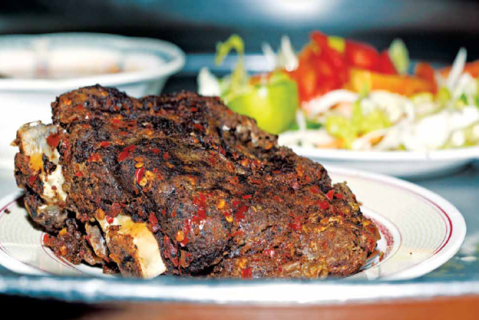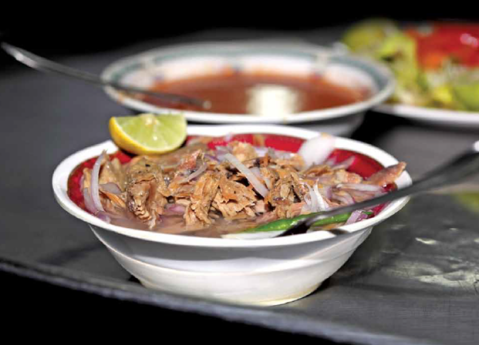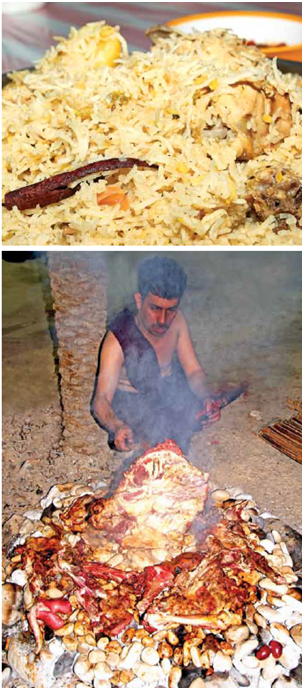Eat your heart out!
As soon as you arrive in Oman, don’t make a beeline for the widely available international cuisine, but rather sample the enticing local fare
While you can find everything from cannelloni to croissants, bagels to biryanis – and often on the same street – no visit to Oman is complete without trying the splendid local cuisine. Here is a quick guide to some of the nation’s signature snacks and defining dishes.
Rice: Is the staple diet eaten at lunchtime in all the regions of Oman. Cooked in a variety of ways, rice is served with meat dishes. ‘Maqbous’ – tinged with saffron and cooked over spicy red or white meat, is a popular rice dish. ‘Qabooli’, however, is a zesty combination of meat, potatoes and rice browned with sauces.
All Things Spice: Similar in consistency to Harees, but blessed with a nutty and bracing bouquet, ‘Qabooli’ is a goat and rice-based stew completed by cashews, pine kernels and lemons. The panoply of spices used – cinnamon, cardamoms, saffron, cloves – date this titbit back to the era when Oman was one of the world’s spice trading centres.
Al Aursia: Is an exclusive Omani dish, served during festivals and some occasions, consists of mashed rice. Usually, it is served with special sweet sauce locally called ‘Al Turtcha’.
An Ancient Delicacy: One of the customary celebratory meals in Oman is Harees. It’s a lip-smacking porridge of roughly-ground wheat slow-cooked overnight with butter and cuts of chicken. Both tart and hearty to the taste, harees is energy-rich and the ideal fuel for a wander in the desert.
Khubz Rakhal: Another signature dish of Oman is this wafer thin bread made out of unleavened dough. In the days of yore, this local staple food was cooked over a fire of palm fronds. To make this bread, a handful of premixed dough is taken and rolled into a fist sized ball and then smeared into a very thin layer on the hot griddle. When the dough becomes crispy, an egg can be broken and smeared along with mayonnaise, if needed. This versatile and non-spicy bread can be served during any meal time. For instance, Omanis will enjoy this thin bread with honey for breakfast, or crumble it over curries of fish, chicken or mutton during dinner or even during lunch time.
A Subtle Confection: The Omani sweet tooth is legendary. Fruity scents and treacly aromas ooze from souqs, restaurants and cafes across the land. A time-honoured symbol of hospitality, halwa is a filling yet dulcet and subtle confection of cooked dates, clarified butter, caramelised sugar, starch and spices. The perfect accompaniment is a cup of strong black Omani coffee, earthy on the nose yet with a sweet and warming finish thanks to the sugar and cardamoms within. Halwa also goes well with Omani tea which, unique amongst the Arab nations, is prepared with plenty of milk, sugar and spices such as cloves and cardamoms. At colder times of the year, ginger is added for its cosy and warming tones. Head to an event like the Muscat Festival and you can watch men toiling over huge steaming cauldrons, preparing halwa in the traditional fashion. The full-bodied taste of fresh, hot halwa is something else again…
Al Mudhbi: Besides the many authentic and popular local dishes, one of Oman’s all-time favourite foods is ‘Al Mudhbi’, which is nothing but marinated meat grilled to perfection over smouldering stones. Especially when out camping, hiking or, simply enjoying the great outdoors, pitching a camp, setting a campfire and grilling some tender meat over the preheated stones must rank among the top of Oman’s authentic delicacies. This particular dish is said to be a speciality of the Sultanate’s southern region of Dhofar.
Treasures of the Sea: In the old days, the bountiful seafood of Oman’s Arabian Sea coast added variety to the rice, goat and vegetable diet of the interior. The festival time ritual of delivering dried fish to a wadi (fertile valley area) by camel may not be so common nowadays, but you can still find dried shark meat – often in soups – that tastes so exquisitely briny as to be almost smoky, locally known as (Owal). Samak pablo (fish in a turmeric and coconut milk gravy) is harder to find, but equally as appetising, recalling the exotic mellowness of certain Indian dishes.
A Three Day Event: You’re more likely to find showa in a family home than in a restaurant, partly for reasons of practicality: it can take up to three days to cook. Another Eid favourite, it’s essentially an entire lamb, pungently-spiced and cloaked in banana leaves cooked over charcoals to tender perfection. It’s often served with lemon chutney and salt-dried shark.



